Millions of articles are posted on corporate, hobby, entertainment and cultural blogs. Unfortunately, most of them go right into the online dump, which is a serious loss. So, if your blog posts don’t generate traffic, suddenly running a blog is considerably less profitable. Don’t worry, even the oldest posts are worth updating, which in turn will improve your website SEO-wise and increase user traffic. Check out why and how update content!
Blog – why is it important for your company website?
Usually, a company website isn’t rich in content, and content is of greatest value to Google search engine. Running a blog gives you an opportunity to present more information about your services, build your brand or finally become an expert on topics discussed on the blog that are of importance to your possible clients.
Google search engine algorithms like extensive, specialist content; they also like when you update it. For the search engine, content posted at your website is like wine – the older, the better, though it needs to be kept up-to-date.
Recently, when I was optimizing the website of a clinic engaged, among other things, in plastic surgery and bariatrics, I spotted an interesting example on ObesityCoverage.com, where really comprehensive content useful to the user is posted.
source: https://www.obesitycoverage.com/the-experts-guide-to-gastric-bypass/
A guide on what to do before and after a gastric bypass is approximately 30 thousand characters with spaces long and covers multiple aspects that might be of interest to a patient. In addition, the article has informative graphical elements, diagrams, sources or even diets recommended post-surgery. It’s no surprise then that it’s ranked high in SERPs.
Nevertheless, blogs aren’t always run in a thoughtful manner; they’re also often of poor quality. In Poland, it still happens that only the surface of the topic is scratched and blogs are created merely because competitors have them.
Therefore, if you still don’t benefit from your blog, perhaps you’re doing something wrong. If this is the case, find and update the old blog posts, adding more information to them as well.
Old blog posts – why to update them at all?
When it was discovered that company blogs increase traffic and thus sales, they’ve become “another thing to get done”. Unfortunately, willingness alone isn’t sufficient anymore, what also matters is quality or even pleasure to read a given article. Why? Because a high bounce rate, caused by language not tailored to the user, makes Google lower your position over time.
If former managers of content at your website or you yourself weren’t knowledgeable enough about marketing and used to write articles in the spirit of quantity over quality, and the old posts were drowned in the sea of pointlessness, don’t be afraid – not everything is lost. First of all, you need to decide what’s worth and what’s not worth updating on your blog.
From a technical perspective, if web crawlers need to crawl e.g. 1000 URLs which are pretty useless, the crawl budget for your entire website gets drained. As a result, important pages can suffer in terms of indexing because the crawler will spend less time on them or they’ll be overlooked completely. What’s more, old posts of poor quality which got indexed and, let’s say, managed somehow to get ranked high enough in SERPs will translate into a high bounce rate.
That’s why while digging through the old content, stay on the lookout for what’s most valuable for you and focus on that. For instance, you may combine related content into a single long article or just update a post to tap its full potential. Posts that don’t demonstrate potential ought to be deleted, moved or de-indexed.
A solution to that is proper adaptation of the old posts and articles with potential.
How to update old articles to make them ranked higher on Google:
- increase the text volume
- tailor content to user intentions
- spice the text up with relevant multimedia
- provide new facts
- supplement the topic with new information
- improve internal linking.
All of the above significantly affect the probability of your post being noticed by Google, which will attract new users to your website.
Content of poor quality is frequently posted online, even on serious and renowned platforms which create click baits or content tweaked for SEO purposes.
First of all, often the text on numerous websites is too short, poorly formatted and has i.e. only one image which isn’t even eye-catching. They don’t have headings and the body text fails to serve its purpose – it neither is informative for the user nor comprehensively covers the topic, discussing virtually nothing. Given little content and its low quality, the search engine considers such articles breadcrumbs rather than a delicacy to be served in top10 of search results.
How to decide which blog post is worth updating?
When you decide to update blog posts, look at your inventory first. Naturally, if you have a few dozens of articles, you can easily track what you’ve got; however, if you have hundreds or thousands of articles and posts, it’s not a bad idea to employ certain tools. For example, with Screaming Frog you can identify all URLs, and with Google Analitycs you can verify traffic potential.
After Screaming Frog has crawled your website, go through all the URLs and decide which to keep and which to delete (if you have a lot of material); once you’ve done it, go to Google Analytics and find out the potential of individual items of your content.
Pay attention to the bounce rate – if there are popular URLs within your website, check data about their bounce rate. They might be doing pretty well in Google, especially if they’d been published a long time ago, but what if a bounce rated amounts to an alarming level of 50%, give or take? Those articles need some refreshment!
It’s worth to update them so as to make them more relevant to your audience. Probably they’re too short and lack interesting information. Adding new elements to the text will not only improve the extent of keywords (visibility) and increase their number but also encourage users to stay longer at your website and read the whole article.
Assess the usefulness of content
How to assess content usefulness? Answer yourself a few questions.
- First and foremost: do users find your content useful? An article should be helpful, informative or entertaining – it ought to have something of interest to readers.
- Another question: do you benefit from your content? In other words, does your content get you ranked higher, generate organic traffic and helps your business through a higher conversion rate?
- Next question: is a given article good in terms of content? It’s a subjective question, obviously, but you know content is of poor quality when you see it. Lack of meaning, mistakes, poor text organization – all of that affect the perception of an article as good or bad.
- Think also about whether your content is at least a little relevant to your website, brand and customers. If it is, keep it and improve it so that it generates bigger traffic.
- The last question you ought to ask yourself is whether a given item of your content causes any problems. It may happen that a post on your blog duplicates another post or is copied from another website. Duplicate content leads to content cannibalization, and that’s something you must avoid.
With these criteria in mind, decide whether or not you want to keep an old post. If not, you can use a 301 redirect to the blog main page or other chunk of similar content.
I’ve chosen content to update. What now?
Once you’ve handpicked articles with potential, you can improve or update them by adding multimedia or more internal links.
Use SERPs
Updating content, you can use what you’ve got in SERPs. When Google displays search results, it tries to make them as relevant to a given keyword, that is to user intentions, as possible. Go to top10 and find out what they have that you don’t. Make your content more useful to your audience.
The rank in SERPs is affected not only by content but also by the number and quality of backlinks. Nevertheless, however, when creating content for your blog for selected keywords, identify what they’re about and how articles/websites in top10 of search results look like.
Certain keywords can have more than one meaning. An example might be the phrase “prosthetics London”. There’s a variety of prostheses – for teeth, joints or even entire limbs. Google cares about an intent of the user typing in a given keyword. For “prosthetics London” there’re displayed results suggesting artificial limbs for amputees. Thus, writing an article for “prosthetics London”, you need to follow the trend.
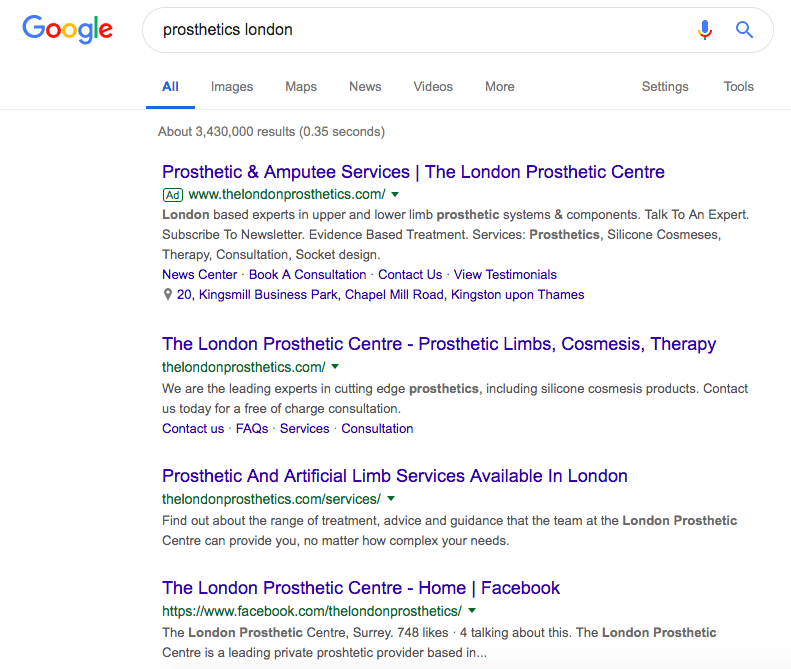
It’s also worth taking a closer look at those results. Visit competitors’ websites and observe their posts and articles – whether they’re long or short, what they’re precisely about, if they’re staffed with keywords or written “naturally”. This will give you a broader perspective on how to create your own content to outperform your competition.
Track your ranking and compare it with your competitors
Add a project in Senuto Rank Tracker to track the positions of the keywords that are most important to you. Also, track these ones, which ranking you aim to improve.
Log in to Senuto Platform and Add your project. It’s pretty easy and takes only 3 steps:
- Step 1 – Name the website, which Google ranking you want to track.
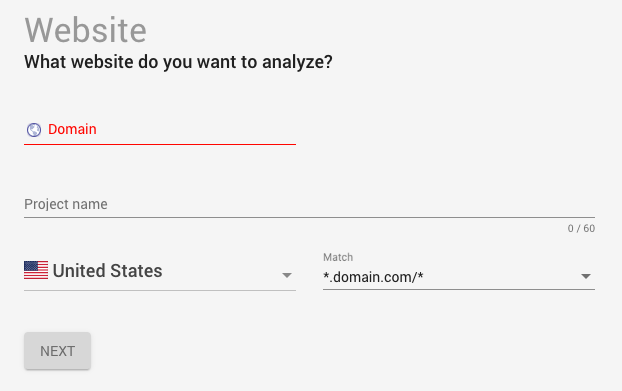
- Step 2 – Add keywords you want to track.
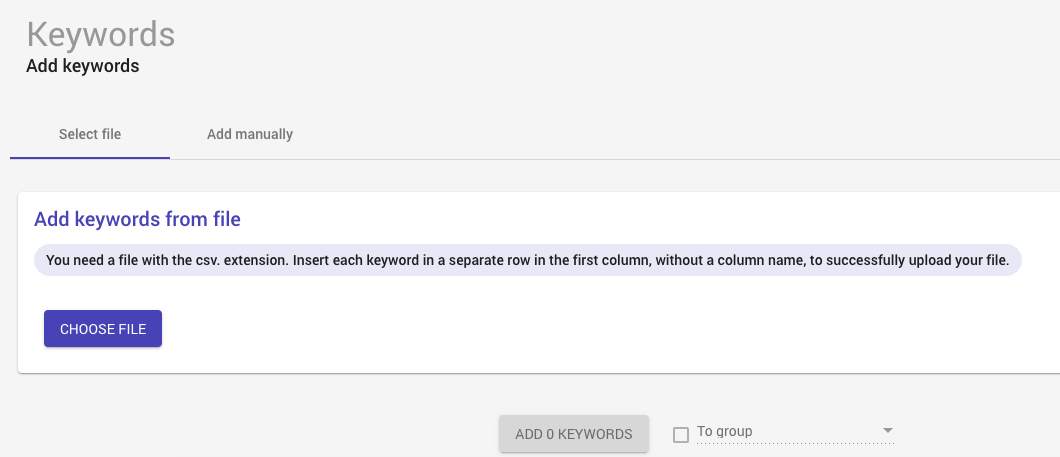
- Step 3 – After you choose the keywords you want to track, pick the websites you compete with in SERP. Don’t forget that it might be the case that your competitors in Google are not the same as your business competitors.
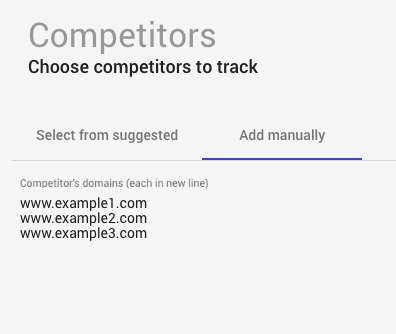
Step 3 – Add the chosen competitive websites.
After you’ve added your first project, wait for all the data to be gathered. When it’s ready, you’ll be noticed by an alert in the top right corner in the Senuto Platform window. As soon as your data is ready, go straight to the Competition Analysis tool. That’s where you’ll check the keywords (out of the keyword set that you added in the project) that your competitors are ranking for and you’re not.
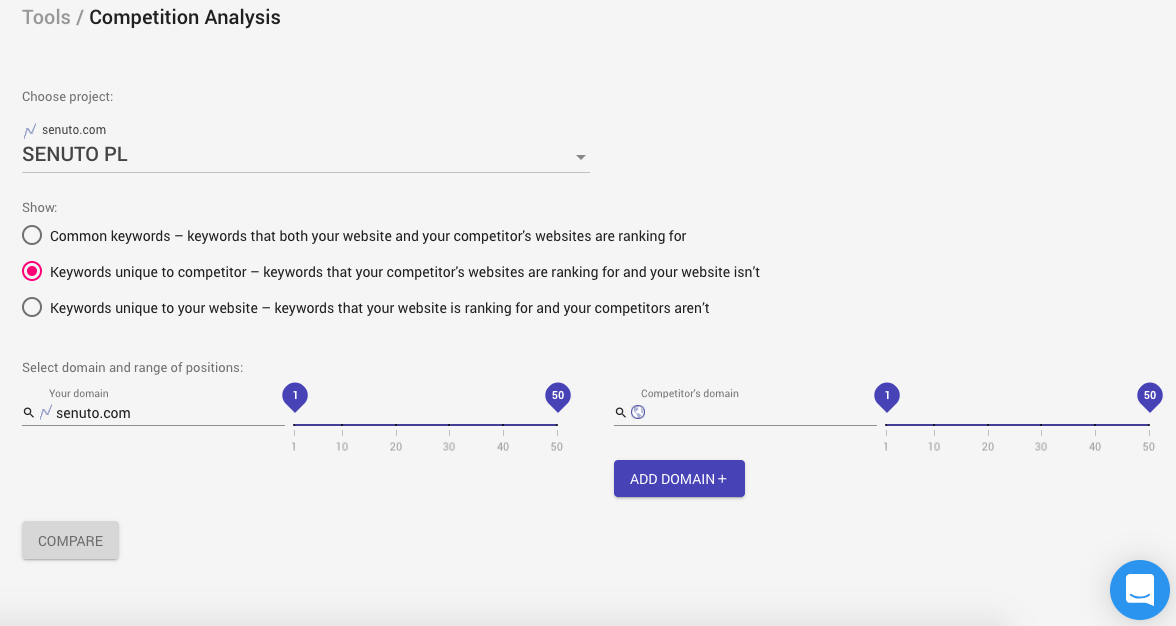
Step 4 – Find the keywords that your competitors are ranking for and you’re not.
This way you’re able to track on which keywords you still need to work so as to outrank your competitors. Rank Tracker allows you monitor if and how fast your domain climbs up towards the highest positions in Google. Eventually you’ll get there, fingers crossed!
Things you can do to improve an old blog post even more
First of all, make sure that your article is up-to-date. If not, update it.
Also, add more multimedia – Google loves infographics, videos and pictures.
For instance, backlinko.com – a blog famous in the SEO industry – is staffed with images and is ranked high. By the way, Brian Dean, founder of Backlinko, gets the most out of article updating; if you’re interested, check out his blog.
Brian Dean definitely shows his results off on his blog, demonstrating that an update to an old post generates even a 50.95% traffic for him in 7 days only. It’s evident that it’s worth a shot and this strategy is paying off.
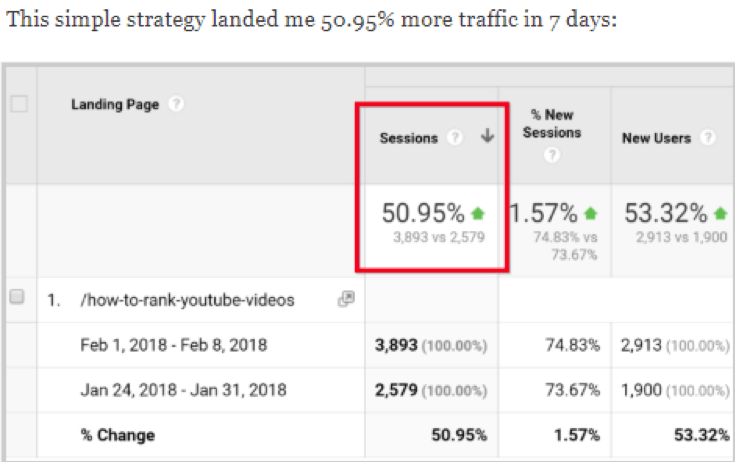
source: https://backlinko.com/increase-website-traffic
Updating an old blog post, pay attention to its introduction. It ought to be brief, digestible and appealing to the user.
With new information content gets more voluminous. However, if you don’t intend to do that because you think that adding multimedia and improving the text stylistically are enough, give it a try. Write additional 2500 characters or more. Google is happy when new content is added on websites.
Summary
Many SEO experts, Brian Dean included, believe that updating old blog posts gives measurable effects in the form of increased website traffic. It’s important for traffic generated not to be empty, not beneficial to users and your business. That’s why when you update your content, do it wisely. Only then you and users will benefit from your website, services and products.
Also, don’t forget to track the ranking of your keywords. Keep up-to-date and boost your content in every possible way.
 Patryk Augustowski
Patryk Augustowski